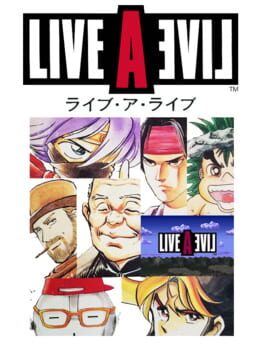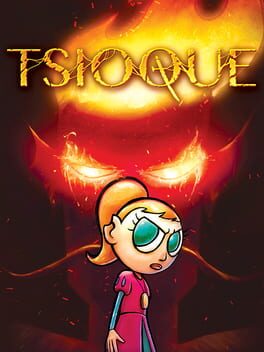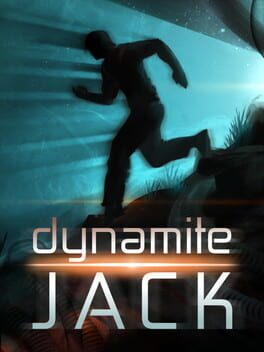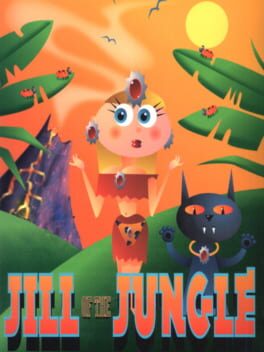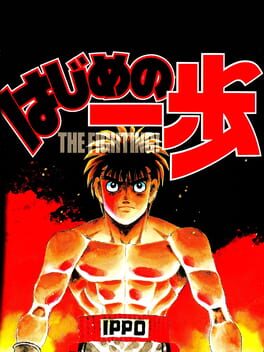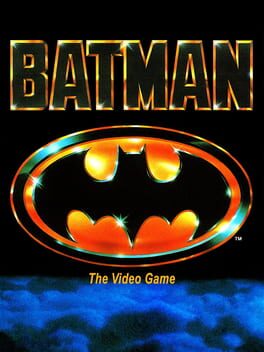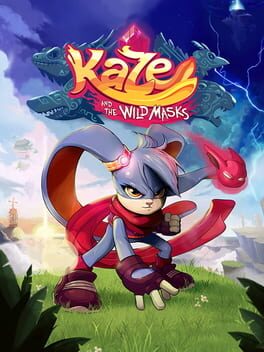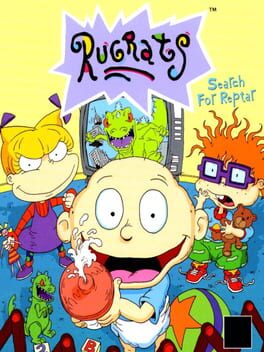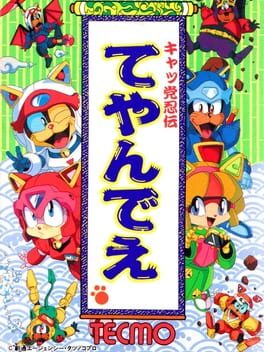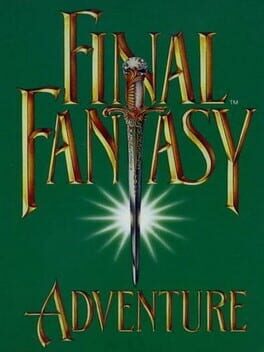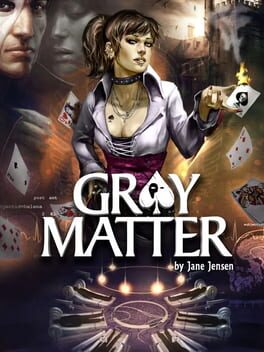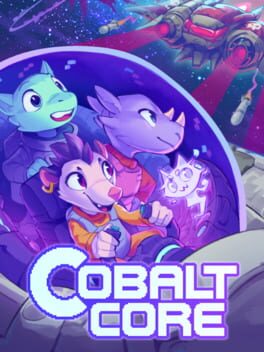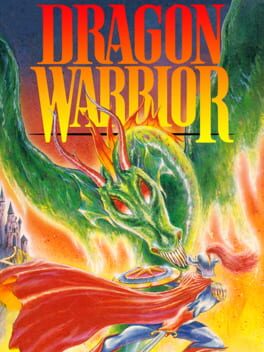EVX
1994
In absolute awe of the nearly raw, undercooked nature of this game. It's weird, it's ambitious, it fails on multiple fronts. It's an RPG Maker game before RPG Maker existed, a borderline avant-garde experiment from a time when you had to call a factory and physically manufacture cartridges to get a game on the shelf.
More than anything: the combat. It's different, that's for sure. It's easy to see what they were going for, the positioning, unit facing, action delays. And… most of it doesn't matter? Combat is trivial until the final chapter, moderately challenging at best from then on. Status effects are plentiful but largely irrelevant, action timing is so very odd. Sometimes opening a menu allows another character to go, sometimes a unit will take 7 active turns to unleash an underwhelming move. Opponents need to spend time to reorient, but you do not, despite the numerous enemy moves that change your facing. You have a plethora of abilities on each character, most of them meaningless. The non-linear nature means everything before the finale is the exact same difficulty. Everything is just… there. A pile of ideas.
So it's a good thing the rest works. Yasunori Mitsuda's boss theme rips right out of the speakers, gets you hyped every time even though you know you're in virtually no danger. Every character has their own musical identity, each era is sonically unique. The themes slowly reveal themselves, the plot hook setting in as the chapters move on. The different genres have different mechanics, the dialogue has different fonts. Different artists for every scenario, different takes on the same message, an ending that pulls it all together. You see the credits no less than nine separate times, and they never let you skip them, treating each as a proper endroll.
It's uneven, a mess, and a reminder that Squaresoft's RPGs were almost always full of the same odd choices and missteps. More so here, but it's easy to point out in almost every title of theirs from the era. They took risks and then polished the results, the flaws harder to see in the resultant sheen.
More than anything: the combat. It's different, that's for sure. It's easy to see what they were going for, the positioning, unit facing, action delays. And… most of it doesn't matter? Combat is trivial until the final chapter, moderately challenging at best from then on. Status effects are plentiful but largely irrelevant, action timing is so very odd. Sometimes opening a menu allows another character to go, sometimes a unit will take 7 active turns to unleash an underwhelming move. Opponents need to spend time to reorient, but you do not, despite the numerous enemy moves that change your facing. You have a plethora of abilities on each character, most of them meaningless. The non-linear nature means everything before the finale is the exact same difficulty. Everything is just… there. A pile of ideas.
So it's a good thing the rest works. Yasunori Mitsuda's boss theme rips right out of the speakers, gets you hyped every time even though you know you're in virtually no danger. Every character has their own musical identity, each era is sonically unique. The themes slowly reveal themselves, the plot hook setting in as the chapters move on. The different genres have different mechanics, the dialogue has different fonts. Different artists for every scenario, different takes on the same message, an ending that pulls it all together. You see the credits no less than nine separate times, and they never let you skip them, treating each as a proper endroll.
It's uneven, a mess, and a reminder that Squaresoft's RPGs were almost always full of the same odd choices and missteps. More so here, but it's easy to point out in almost every title of theirs from the era. They took risks and then polished the results, the flaws harder to see in the resultant sheen.
2018
Hey, look. It's a point & click by way of Dragon's Lair, lovingly hand-drawn, little quicktime sequences here and there. Tons of impish fantasy charm, really nails the whimsical fairy tale vibe. Sure, there's some inconsistencies, some odd choices here and there that stand out, but nothing egregious.
And then it cashes in, tosses a little coin of dread into the well. I quite literally swore quietly under my breath when it happened. This was going to be one of those games, a game with a southpaw hookshot under its belt. To Tsioque's credit, it spends that coin well, plays off its strengths, addresses its perceived weaknesses. A welcome surprise in a game already enjoyed.
And then it cashes in, tosses a little coin of dread into the well. I quite literally swore quietly under my breath when it happened. This was going to be one of those games, a game with a southpaw hookshot under its belt. To Tsioque's credit, it spends that coin well, plays off its strengths, addresses its perceived weaknesses. A welcome surprise in a game already enjoyed.
2012
I get it. You see a game that's top down, destructible terrain, manually detonated bombs. That's Bomberman, right? Wrong.
This is Chip's Challenge, Stealth Edition.
And what's here works reasonably well. It's a slow start, for sure, and the game as a whole is distinctly a bit underbaked. Achievement sets for each level are nice, but the lack of one for accomplishing all of these optional objectives in one go is notably missing. There's speed-based leaderboards bolstered by collectibles that shave seconds off your time, but those collectibles are only found on one map in each area. There are achievements for killing all guards on a map, but that is always much easier than the pacifist runs. And so on.
The game is short, though, and has that distinct charm of a successful 2012 Ludum Dare project. A sequel would have been ideal, a game that learns its lessons and implements them from step one. But I had a good enough time to do almost every optional achievement, to collect all the collectables. The amateur presentation, the genuine hype over the music change in the last area, the charm of seeing one guy and some friends basically doing the best they can because they love video games and a proper dev shot at the end of the credits. Good stuff all around, just not great.
This is Chip's Challenge, Stealth Edition.
And what's here works reasonably well. It's a slow start, for sure, and the game as a whole is distinctly a bit underbaked. Achievement sets for each level are nice, but the lack of one for accomplishing all of these optional objectives in one go is notably missing. There's speed-based leaderboards bolstered by collectibles that shave seconds off your time, but those collectibles are only found on one map in each area. There are achievements for killing all guards on a map, but that is always much easier than the pacifist runs. And so on.
The game is short, though, and has that distinct charm of a successful 2012 Ludum Dare project. A sequel would have been ideal, a game that learns its lessons and implements them from step one. But I had a good enough time to do almost every optional achievement, to collect all the collectables. The amateur presentation, the genuine hype over the music change in the last area, the charm of seeing one guy and some friends basically doing the best they can because they love video games and a proper dev shot at the end of the credits. Good stuff all around, just not great.
1992
There's nothing more damning you can say about Jill of the Jungle as a platformer than to note that Sonic the Hedgehog 2 came out the same year. And yet.
This is a bit of gaming history that is difficult to explain. You're young. Maybe your dad has a computer, maybe you have an aging computer lab at school. PCs are different beasts, expensive, a world apart. And this game, it's shareware. It's fine, completely legal, to pass it out on floppy disks. Encouraged, even. So you play it at school, or on your dad's computer in his den, or at a friends' house before bringing home a copy. It's clunkier than Mario, slower than Sonic. But it's available.
And there's a certain charm. A young Tim Sweeney, establishing a second hit for Epic Megagames after ZZT. Cocksure, arrogant, taunting other game franchises within the confines of this sophomore success by… picking up apples that provide news bulletins? The game croons "YEEAAAH" when you pick up a key, a guitar riff for those apples. Throwing a dagger next to a wall makes a record scratch. The sound test mocks its own contents as terrible. It's odd, unfiltered, the work of a young man.
More's the charm. There's nothing outstanding about Jill of the Jungle, but there's plenty to love. The jump animation that faces the screen, the excellent run cycle, one-off transformations, confident declarations on a wall that an upcoming section is tricky. It's amateur, earnest, easy and forgivable for its faults because its archaic contents are presented with an excess of bluster and, perhaps, a bit of actual panache.
This is a bit of gaming history that is difficult to explain. You're young. Maybe your dad has a computer, maybe you have an aging computer lab at school. PCs are different beasts, expensive, a world apart. And this game, it's shareware. It's fine, completely legal, to pass it out on floppy disks. Encouraged, even. So you play it at school, or on your dad's computer in his den, or at a friends' house before bringing home a copy. It's clunkier than Mario, slower than Sonic. But it's available.
And there's a certain charm. A young Tim Sweeney, establishing a second hit for Epic Megagames after ZZT. Cocksure, arrogant, taunting other game franchises within the confines of this sophomore success by… picking up apples that provide news bulletins? The game croons "YEEAAAH" when you pick up a key, a guitar riff for those apples. Throwing a dagger next to a wall makes a record scratch. The sound test mocks its own contents as terrible. It's odd, unfiltered, the work of a young man.
More's the charm. There's nothing outstanding about Jill of the Jungle, but there's plenty to love. The jump animation that faces the screen, the excellent run cycle, one-off transformations, confident declarations on a wall that an upcoming section is tricky. It's amateur, earnest, easy and forgivable for its faults because its archaic contents are presented with an excess of bluster and, perhaps, a bit of actual panache.
It feels unfair to call this game barebones. It's a fighting game, after all. But it's one based on Hajime no Ippo, so you'd expect a little… something when it comes to the story mode, right? Instead it's the usual affair: no story, no cutscenes. There's plenty of polish, mind, a branching ending with attached unlocks, some unique voice lines. And it's so very stylish. Beautiful sprites, great energy.
The problem, at least for someone with no access to the manual and its contents, is that the real single player mode isn't the story mode. That's perfunctory, a tutorial in all but name. The real meat is the tournament mode: pick your fighter, grind your way through. The CPU is much harder here, more relentless. There's no mashing your way through this time. Here the differences between the opponents really shine, your tactics no longer boiling down to closing the gap, four hooks and a liver blow. Range matters more here, dodging is essential, patterns critical. It's fast, punishing. It's the game proper, and should have been unlocked after story mode to emphasize just that.
Nonetheless it's hard to complain. It's Treasure, it's gorgeous, it does the source material justice while standing its own against the venerable Punch-Out. Well worth the time.
The problem, at least for someone with no access to the manual and its contents, is that the real single player mode isn't the story mode. That's perfunctory, a tutorial in all but name. The real meat is the tournament mode: pick your fighter, grind your way through. The CPU is much harder here, more relentless. There's no mashing your way through this time. Here the differences between the opponents really shine, your tactics no longer boiling down to closing the gap, four hooks and a liver blow. Range matters more here, dodging is essential, patterns critical. It's fast, punishing. It's the game proper, and should have been unlocked after story mode to emphasize just that.
Nonetheless it's hard to complain. It's Treasure, it's gorgeous, it does the source material justice while standing its own against the venerable Punch-Out. Well worth the time.
Ninja Gaiden's easier sibling from the states, all the way down to how the penultimate boss works. Just a great time overall, stellar graphics that still look really good, KGBeast as a one-off mook right out the gate, music and sound effects that hit just right.
Pity about the end, where they clearly ran out of time or money or whatever. The final stage reuses the first song, is much shorter and stacks two bosses on top of each other at the end to make up for it, heavily suggesting that there was supposed to be an entire sixth stage.
Still, the game is fair, generous with both its unlimited continues and the fact that ammo carries over even after game overs. There is some cheap damage, but once you know it's there it's surprisingly easy to get through most stages without dying. And that wall jump feels so damn good.
Weapon balance could be better, but it also doesn't need to be, and the fact that the game resists giving you an option for easily hitting above or below your horizontal plane makes for some great design throughout the run.
Special shoutout to the fact that this game came out before the broad stagnation of Batman's rogue gallery outside of the comics. Maxie Zeus? Firebug? Killer Moth? That's the good stuff.
Pity about the end, where they clearly ran out of time or money or whatever. The final stage reuses the first song, is much shorter and stacks two bosses on top of each other at the end to make up for it, heavily suggesting that there was supposed to be an entire sixth stage.
Still, the game is fair, generous with both its unlimited continues and the fact that ammo carries over even after game overs. There is some cheap damage, but once you know it's there it's surprisingly easy to get through most stages without dying. And that wall jump feels so damn good.
Weapon balance could be better, but it also doesn't need to be, and the fact that the game resists giving you an option for easily hitting above or below your horizontal plane makes for some great design throughout the run.
Special shoutout to the fact that this game came out before the broad stagnation of Batman's rogue gallery outside of the comics. Maxie Zeus? Firebug? Killer Moth? That's the good stuff.
2017
There's a careful balance struck here that seems to be overlooked when this game is discussed. This sort of game - abstract, a disjointed and indirect story, a core mechanic that relies on experimentation - can easily stumble. Too diffuse and vague, abstract to a fault, or just a bit too simple, with a threadbare narrative and solutions that are easily waltzed into. Gorogoa's triumph is its careful navigation of this design tightrope and the effortless way it fuses this with its absolutely gorgeous art direction, complete with a final chapter that does a stellar job of pulling all the threads together.
Can't throw a rock without hitting a review that compares this to Donkey Kong Country, specifically *2*, and then a series of opinions on whether or not it lives up to its spiritual inspiration. That's not happening here. All I care about is whether the game is fun on its own merits.
And it is. It's not perfect, for sure. Making a traditional platformer these days is a daunting task: you either go all in on a unique mechanic and build around it or you stick to meat and potatoes design and hope you compare favorably with the classics. This is the latter, for sure, although it has its own ideas here and there.
The art is lovely, that thin-pixel style. Tons of energy, tons of personality in the amusingly overdetailed vegetable enemies. Everything in the environment is familiar, easy to read, and the movement through said environment feels good. The jump jumps, the dash dashes. There's little bonus levels tucked out of the way for the watchful, hundred gem goals per level, finding the four letters of your name. Lots to collect, and it's easy enough to do so. I casually scooped up most on the way through, doubled back on occasion, apparently missed some secret levels that cost me the true ending.
That last sentence is key, though. I got to the last boss, hit its very real difficulty spike, powered through it in good cheer. The ending was obviously not true, the game politely noting I was short three gems, which in turn were hidden inside secret levels. I could go hunt for them, look up a guide. But I was done. The game is good, fun, but not great. Not enough to pull me in for the 100%, but a fun ride nonetheless.
And it is. It's not perfect, for sure. Making a traditional platformer these days is a daunting task: you either go all in on a unique mechanic and build around it or you stick to meat and potatoes design and hope you compare favorably with the classics. This is the latter, for sure, although it has its own ideas here and there.
The art is lovely, that thin-pixel style. Tons of energy, tons of personality in the amusingly overdetailed vegetable enemies. Everything in the environment is familiar, easy to read, and the movement through said environment feels good. The jump jumps, the dash dashes. There's little bonus levels tucked out of the way for the watchful, hundred gem goals per level, finding the four letters of your name. Lots to collect, and it's easy enough to do so. I casually scooped up most on the way through, doubled back on occasion, apparently missed some secret levels that cost me the true ending.
That last sentence is key, though. I got to the last boss, hit its very real difficulty spike, powered through it in good cheer. The ending was obviously not true, the game politely noting I was short three gems, which in turn were hidden inside secret levels. I could go hunt for them, look up a guide. But I was done. The game is good, fun, but not great. Not enough to pull me in for the 100%, but a fun ride nonetheless.
Is it a good game? No, not really. The controls are clunky, the camera even more so. The entire affair is emblematic of the shift to 3D and the effect it would have on quality licensed games, the skillset needed to make them becoming more specialized and the rough edges far more easily seen.
But quality is the word here, because there's clearly effort in play. Though fumbling, the game is certainly creative, packed with references and clever ideas that the execution simply cannot keep pace with. The victory lap at the end, playing as a triumphant Reptar destroying the city with colorful news commentary in the background, is evidence enough that someone working on this genuinely cared.
But quality is the word here, because there's clearly effort in play. Though fumbling, the game is certainly creative, packed with references and clever ideas that the execution simply cannot keep pace with. The victory lap at the end, playing as a triumphant Reptar destroying the city with colorful news commentary in the background, is evidence enough that someone working on this genuinely cared.
First up: there's a translation patch out for this. It's not necessary by any means, but if you want dad jokes and bad puns, then step right up. Personally, I didn't use it. I know Samurai Pizza Cats from when I was a kid. Knew it, hated it. It was loud, obnoxious, and I had aged well out of its demographic by the time it made its way over to the west. Thankfully, none of that matters here. There's no critical dialogue, hints, anything of that sort. You can ignore the window dressing as much as you like.
Here's what you get: a simple, easygoing platformer. Pick your main cat each level, swap to the supplementary ones to overcome specific obstacles. The mechanics are straightforward, easy to guess if you have any literacy from this genre and era. Stages are colorful and branching, bosses are easy, music is actually pretty good.
Easy, though, is the keyword here. You can comfortably make it to the final stage without dying, although the final boss is likely to take a life or two off you due to an unintuitive mechanic. Worth noting this game suffers the usual licensed platformer issue of running out of gas toward the end. Shorter stages, fewer paths, recycled (although reskinned) enemies. Still: fun, worthwhile, easily crushed in a single sitting.
Here's what you get: a simple, easygoing platformer. Pick your main cat each level, swap to the supplementary ones to overcome specific obstacles. The mechanics are straightforward, easy to guess if you have any literacy from this genre and era. Stages are colorful and branching, bosses are easy, music is actually pretty good.
Easy, though, is the keyword here. You can comfortably make it to the final stage without dying, although the final boss is likely to take a life or two off you due to an unintuitive mechanic. Worth noting this game suffers the usual licensed platformer issue of running out of gas toward the end. Shorter stages, fewer paths, recycled (although reskinned) enemies. Still: fun, worthwhile, easily crushed in a single sitting.
Time has a way of making all things small.
I remember playing Final Fantasy Adventure when I was a kid. I was new to RPGs, fresh off of Final Fantasy, thrilled to have one I could play in my treehouse, safe from interruptions. I didn't know it would be closer to Zelda than its namesake, I didn't care once I found out. The world in that little cartridge seemed so big, so mysterious. I didn't mind the janky combat, the weapon switching, the simplistic dialogue and storyline. I loved exploring, grinding, leveling, was delighted by new towns and twists. It was full of possibilities, it was mine, and I played it over and over again.
And now I've revisited it. The map now seems smaller, emptier. The borderline linear nature of the game stands out. The hitboxes, the bizarre choices, the godforsaken snowman puzzles all stand out in stark contrast with my memories. The music is at times grating, it is all too easy to forget how to get back to some prior location you are suddenly directed to, the incessant swapping of weapons and the borderline antagonistic enemy immunities causes you to spend an inordinate amount of time in menus. Chests can block your path, magic is all but useless outside of healing, items simply build up in your inventory until you have to start throwing them away. Critical items like keys and mattocks are limited, rarely found and often purchased. It's all too easy to run out of them in the middle of a dungeon, leaving you to hunt down the one enemy type in the game that produces them.
Nonetheless: a lovely game, an oddball barrel of design decisions. Elephants as the final enemy type, grafting robotic legs to beloved companions, spring-based enemies found in natural environments, a man who is more hair than flesh, a noble who is the child of a medusa, a medusa that creates more of its kind via bite-based infection. It's strange, amateur, reaching and endearing all at once, the athletic brother to the more steady Final Fantasy. And while it may be smaller now than it once was, it was more than big enough to get lost in once again.
I remember playing Final Fantasy Adventure when I was a kid. I was new to RPGs, fresh off of Final Fantasy, thrilled to have one I could play in my treehouse, safe from interruptions. I didn't know it would be closer to Zelda than its namesake, I didn't care once I found out. The world in that little cartridge seemed so big, so mysterious. I didn't mind the janky combat, the weapon switching, the simplistic dialogue and storyline. I loved exploring, grinding, leveling, was delighted by new towns and twists. It was full of possibilities, it was mine, and I played it over and over again.
And now I've revisited it. The map now seems smaller, emptier. The borderline linear nature of the game stands out. The hitboxes, the bizarre choices, the godforsaken snowman puzzles all stand out in stark contrast with my memories. The music is at times grating, it is all too easy to forget how to get back to some prior location you are suddenly directed to, the incessant swapping of weapons and the borderline antagonistic enemy immunities causes you to spend an inordinate amount of time in menus. Chests can block your path, magic is all but useless outside of healing, items simply build up in your inventory until you have to start throwing them away. Critical items like keys and mattocks are limited, rarely found and often purchased. It's all too easy to run out of them in the middle of a dungeon, leaving you to hunt down the one enemy type in the game that produces them.
Nonetheless: a lovely game, an oddball barrel of design decisions. Elephants as the final enemy type, grafting robotic legs to beloved companions, spring-based enemies found in natural environments, a man who is more hair than flesh, a noble who is the child of a medusa, a medusa that creates more of its kind via bite-based infection. It's strange, amateur, reaching and endearing all at once, the athletic brother to the more steady Final Fantasy. And while it may be smaller now than it once was, it was more than big enough to get lost in once again.
2012
You'll never see anything like Xbox Live Indie Games again. It was a wild experiment, an eye-opening moment: anyone could make a game, anyone could put that game on a console, anyone could give you money and download it. This wasn't Xbox Live Arcade, this wasn't AA or anything like the blossoming professional indie scene. This was itch for the console crowd, Steam Greenlight without the vetting, a borderline unfiltered explosion that was a glorious mess and so very accessible.
EvilQuest was one of the breakout hits, a we-have-Crystalis-at-home tween edgelord romp. You're evil. Why are you evil? Because you're evil. You kill allies, get achievements for eating meat, tip strippers and mock the weak. You've no pathos, no tragic backstory. Power is what you seek, and you seek it so that you can hurt others in ways that absolutely scream middle school notebook. It's amateur, shallow, lacking any depth or nuance.
So why play it? Because it's raw. Because it's a game from someone who loved games, from someone who wanted to make their own, who found a friend that wanted to do the same. The game itself is a signpost from another person's life, the first and last game they ever published before going on to become a senior software engineer and a 3D media specialist, respectively. Play it because nobody else looked at Crystalis and said "again", and play it to remember when the modern walls between player and creator started to come down.
EvilQuest was one of the breakout hits, a we-have-Crystalis-at-home tween edgelord romp. You're evil. Why are you evil? Because you're evil. You kill allies, get achievements for eating meat, tip strippers and mock the weak. You've no pathos, no tragic backstory. Power is what you seek, and you seek it so that you can hurt others in ways that absolutely scream middle school notebook. It's amateur, shallow, lacking any depth or nuance.
So why play it? Because it's raw. Because it's a game from someone who loved games, from someone who wanted to make their own, who found a friend that wanted to do the same. The game itself is a signpost from another person's life, the first and last game they ever published before going on to become a senior software engineer and a 3D media specialist, respectively. Play it because nobody else looked at Crystalis and said "again", and play it to remember when the modern walls between player and creator started to come down.
2010
"This sure feels like a Jane Jensen game" thinks person who is unaware that they are playing a Jane Jensen game. She has a certain something to her writing, her games firmly rooted in location and time, anchored by characters and folklore, touched by the supernatural. It's a good thing, impressive that the author's touch carries through as cleanly as it does.
But this isn't the old Jane Jensen. This isn't a point'n'click where you scrape every object off the background, walk around, stare into the void, rub a brick on a window to see if it does anything. And don't get me wrong: I love those. I love carrying a small steamer trunk of items that I picked up solely because the game let me, which means at some point I'll need to use them to steal a car or create a fake ID. But those games are gone.
In their place we have the new breed: more discrete, episodic or borderline so, eager to guide. It makes for a smoother experience, for sure, and allows a more dynamic narrative in a smaller space. A compromise, an olive branch for a new breed of gamers who have far more access to far cheaper games.
And it works, for the most part, and better here than in most other games that have tried the same. Multiple progress bars gently nudge you in multiple directions at once, providing focus and indirect hints as needed. Highlightable interactions ease pixel hunting, internal monologues prompt direction and maintain momentum.
Which is nice, because the story itself moves quite slowly, and getting bogged down mechanically would transform the game into a plodding slog. Instead there's just enough, between puzzles and sleight of hand, narrative hooks and the occasional bit of genuinely deft, unspoken storytelling to keep the pace up.
But it does stumble a bit at the end. There's an obvious hook for the sequel, a sense that a bit of the plot is missing as the finale rolls out and the twin themes become unbalanced. Still, credit for handling the damage carried by the main characters indirectly and for the quite clever framing of everything in the magician/assistant box.
But this isn't the old Jane Jensen. This isn't a point'n'click where you scrape every object off the background, walk around, stare into the void, rub a brick on a window to see if it does anything. And don't get me wrong: I love those. I love carrying a small steamer trunk of items that I picked up solely because the game let me, which means at some point I'll need to use them to steal a car or create a fake ID. But those games are gone.
In their place we have the new breed: more discrete, episodic or borderline so, eager to guide. It makes for a smoother experience, for sure, and allows a more dynamic narrative in a smaller space. A compromise, an olive branch for a new breed of gamers who have far more access to far cheaper games.
And it works, for the most part, and better here than in most other games that have tried the same. Multiple progress bars gently nudge you in multiple directions at once, providing focus and indirect hints as needed. Highlightable interactions ease pixel hunting, internal monologues prompt direction and maintain momentum.
Which is nice, because the story itself moves quite slowly, and getting bogged down mechanically would transform the game into a plodding slog. Instead there's just enough, between puzzles and sleight of hand, narrative hooks and the occasional bit of genuinely deft, unspoken storytelling to keep the pace up.
But it does stumble a bit at the end. There's an obvious hook for the sequel, a sense that a bit of the plot is missing as the finale rolls out and the twin themes become unbalanced. Still, credit for handling the damage carried by the main characters indirectly and for the quite clever framing of everything in the magician/assistant box.
2023
Becoming bored with Cobalt Core was, ironically, the best thing that could've happened to improve my time with it.
Here's the thing: the game is charming, stellar sound design and art direction. The characters are written sparsely but with great charm, the storyline is unobtrusive but interesting. There's very little downtime, decks are mash-ups of the three crew members you select, ships have notable differences and the whole thing just flows along nicely with a proper sense of balance. So, what's the issue?
It's just too… smooth, for lack of a better word. The difficulty is sanded down to a fine, low curve. I won my first run. I won my second one as well. I won my second go at hard mode. In all, I cleared an easy 75% of my runs, and the ones I didn't were almost always due to me just zoning out and not paying attention to the card I was playing.
This would be fine if the game had any real version of ongoing, unlockable incentives, especially those tied to ships and difficulty. The few that are there are easy enough - win on hard mode, win without the core three on your ship, etc - and the unlocks themselves are significant: new crew, new ships. But the cards are where things are lacking. There's no new ones, save those tied to the crew members, and those only when you play as them. It doesn't take long to see most of what the game has on offer, even less to whittle winning solutions down to a science. There's no scaling difficulty to apply pressure, no reason to try difficult combinations. Once the game is solved, you're golden, and that solution comes with ease.
And that's fine. This is a game that is well positioned as an entry-level deckbuilder. Deck thinning is a minimal concern, artifacts are plentiful and quite powerful, bosses are always the same. It's fun, unless fun for you lies in the challenge, in which case you'll be where I was: getting bored.
Still, I wanted to play on. I wanted to see how the plot ended - quite nicely, I'll note - but dreaded churning through the 18 clears required to see the ending. And so, in my boredom, I started just playing as fast as I could, borderline speedrunning my clears, basically daring the game to kill me. Trying new, untested, suboptimal builds, strange crew combinations, going into major fights without repairing.
And that was where I found the fun. Playing as fast as I could, as close to the edge, brought a sense of satisfaction and joy that had quickly faded from the game's early stages. Making builds where I couldn't move, ones where I had few actual attacks, decks with five cards that I drew through multiple times a turn. I don't think I lost a single one of these breakneck, risky runs. A testament to the game's ease, and a reason to embrace it rather than turn away.
Here's the thing: the game is charming, stellar sound design and art direction. The characters are written sparsely but with great charm, the storyline is unobtrusive but interesting. There's very little downtime, decks are mash-ups of the three crew members you select, ships have notable differences and the whole thing just flows along nicely with a proper sense of balance. So, what's the issue?
It's just too… smooth, for lack of a better word. The difficulty is sanded down to a fine, low curve. I won my first run. I won my second one as well. I won my second go at hard mode. In all, I cleared an easy 75% of my runs, and the ones I didn't were almost always due to me just zoning out and not paying attention to the card I was playing.
This would be fine if the game had any real version of ongoing, unlockable incentives, especially those tied to ships and difficulty. The few that are there are easy enough - win on hard mode, win without the core three on your ship, etc - and the unlocks themselves are significant: new crew, new ships. But the cards are where things are lacking. There's no new ones, save those tied to the crew members, and those only when you play as them. It doesn't take long to see most of what the game has on offer, even less to whittle winning solutions down to a science. There's no scaling difficulty to apply pressure, no reason to try difficult combinations. Once the game is solved, you're golden, and that solution comes with ease.
And that's fine. This is a game that is well positioned as an entry-level deckbuilder. Deck thinning is a minimal concern, artifacts are plentiful and quite powerful, bosses are always the same. It's fun, unless fun for you lies in the challenge, in which case you'll be where I was: getting bored.
Still, I wanted to play on. I wanted to see how the plot ended - quite nicely, I'll note - but dreaded churning through the 18 clears required to see the ending. And so, in my boredom, I started just playing as fast as I could, borderline speedrunning my clears, basically daring the game to kill me. Trying new, untested, suboptimal builds, strange crew combinations, going into major fights without repairing.
And that was where I found the fun. Playing as fast as I could, as close to the edge, brought a sense of satisfaction and joy that had quickly faded from the game's early stages. Making builds where I couldn't move, ones where I had few actual attacks, decks with five cards that I drew through multiple times a turn. I don't think I lost a single one of these breakneck, risky runs. A testament to the game's ease, and a reason to embrace it rather than turn away.
1986
First rule of Dragon Warrior: you always let the beat drop on the title screen.
The king, the legend. Not a perfect game by any means, but a game that shames many later entries. Sure, the grind is… well, there's a lot of it. This is cribbing off of Ultima's bones: the walk around, get stronger, push outwards, delve deeper style. Equipment is linear, thoughtless. Secrets are simple, but required. The story is non-existent: save the princess, beat the bad guy.
But there's something about it. Tentative forays over bridges followed by hasty retreats, diving into a dungeon and trying to map out the maze before coming up for air. Not knowing exactly where to go, talking to everyone, taking notes. It's all almost entirely nonlinear. The princess? You don't have to save her. Towns? Optional, but filled with critical clues. You can go everywhere but the final castle right from the start. Surviving there is another matter, but the option is there.
It's truly open world, even if the open world is primitive. The handholding is minimal, the risk is real, the satisfaction palpable. It's a relic now, an artifact from a time when JRPGs were much closer to their western CRPG cousins in style. The years would sand off the difficulty, add progression systems and flash, become more linear and bolstered by stories that lived more on paper than in the mind. Which is all good and well. Evolution is inevitable. Still, it's worth remembering what we lost in the process.
The king, the legend. Not a perfect game by any means, but a game that shames many later entries. Sure, the grind is… well, there's a lot of it. This is cribbing off of Ultima's bones: the walk around, get stronger, push outwards, delve deeper style. Equipment is linear, thoughtless. Secrets are simple, but required. The story is non-existent: save the princess, beat the bad guy.
But there's something about it. Tentative forays over bridges followed by hasty retreats, diving into a dungeon and trying to map out the maze before coming up for air. Not knowing exactly where to go, talking to everyone, taking notes. It's all almost entirely nonlinear. The princess? You don't have to save her. Towns? Optional, but filled with critical clues. You can go everywhere but the final castle right from the start. Surviving there is another matter, but the option is there.
It's truly open world, even if the open world is primitive. The handholding is minimal, the risk is real, the satisfaction palpable. It's a relic now, an artifact from a time when JRPGs were much closer to their western CRPG cousins in style. The years would sand off the difficulty, add progression systems and flash, become more linear and bolstered by stories that lived more on paper than in the mind. Which is all good and well. Evolution is inevitable. Still, it's worth remembering what we lost in the process.
